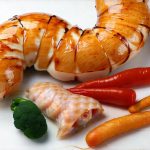Recovering from a stomach virus (also known as viral gastroenteritis) is rarely pleasant. The relentless vomiting, diarrhea, abdominal cramps, and overall feeling of weakness can leave you drained and apprehensive about eating again. It’s completely normal to feel hesitant about reintroducing food, fearing a return of those unpleasant symptoms. However, the body needs nourishment to recover effectively, and strategically reintroducing foods is key to a smooth and comfortable transition back to normal digestion. This isn’t about immediately jumping back into your usual diet; it’s about a gentle, phased approach that respects your digestive system’s delicate state after being ravaged by illness. A thoughtful strategy minimizes the risk of triggering nausea or pain while providing essential nutrients for healing.
The biggest mistake people often make is trying to eat too much, too soon. The gut microbiome – the community of trillions of microorganisms living in your digestive tract – has been significantly disrupted by the virus. Rebuilding this ecosystem takes time and careful nourishment. Introducing foods that are easy to digest and won’t further irritate the intestinal lining is paramount. This process isn’t a race; it’s about listening to your body and responding to its cues. Pay close attention to how different foods make you feel, and be prepared to adjust your plan if necessary. Remember, patience and self-awareness are your greatest allies during this recovery phase. If you are unsure when to start reintroducing food, consult resources on how to reintroduce foods after illness.
The BRAT Diet & Beyond: Starting Slow and Steady
The BRAT diet – Bananas, Rice, Applesauce, Toast – has long been a go-to recommendation for people recovering from stomach viruses. It’s based on the principle of bland, binding foods that are easy to digest and can help firm up stools. While still relevant as a starting point, it’s now understood that restricting your diet solely to these four foods for extended periods isn’t ideal. The BRAT diet lacks essential nutrients, which are crucial for recovery. Think of it as the first step, not the entire solution. A more nuanced approach involves expanding beyond BRAT relatively quickly, while still prioritizing easily digestible options.
Beyond the core BRAT foods, consider adding other low-fiber choices like plain crackers (saltines), boiled potatoes without skin or butter, and clear broth (chicken or vegetable). These provide a little more variety without placing excessive strain on your digestive system. Hydration is also critically important; sip small amounts of water frequently throughout the day. Electrolyte solutions are helpful to replenish those lost through vomiting and diarrhea, but avoid sugary sports drinks which can sometimes worsen symptoms. The goal in these first 24-48 hours after significant symptoms subside is simply to prevent dehydration and introduce a minimal amount of nourishment without causing distress. Sometimes nausea accompanies viral illness; learn about foods that calm the stomach for relief.
The key isn’t just what you eat, but also how much. Start with very small portions – a few bites of banana or a couple of crackers are sufficient. Gradually increase the amount as tolerated. If even a small bite triggers nausea or discomfort, stop immediately and revert to liquids for a while longer. Don’t push it. Your body is telling you what it can handle. The progression should be based on your individual tolerance levels, not a predetermined timeline.
Navigating Potential Triggers: Foods to Avoid Initially
Certain foods are notorious for exacerbating digestive issues, and should be avoided during the initial stages of reintroduction after a stomach virus. These aren’t “bad” foods in general, but they can overwhelm a sensitive system that’s still recovering. – Dairy products are often poorly tolerated due to temporary lactose intolerance following a viral infection. The gut bacteria responsible for digesting lactose may have been disrupted. – Fatty or fried foods require significant digestive effort and can lead to nausea and diarrhea. – Spicy foods irritate the intestinal lining and should be avoided until your system has fully recovered.
- Highly processed foods, containing artificial sweeteners, excessive sugar, or additives, offer little nutritional value and can further disrupt gut health. – Caffeine and alcohol are diuretics that can worsen dehydration and stimulate bowel movements. – High-fiber foods (whole grains, raw vegetables, beans) can be difficult to digest initially and may cause bloating or gas. It’s important to remember that this is temporary. As your digestion improves, you can gradually reintroduce these foods into your diet. Understanding foods that trigger bloating and nausea can help guide choices.
The list seems restrictive, but it’s a necessary step towards recovery. The goal isn’t permanent deprivation; it’s giving your gut time to heal and rebuild its functionality. Think of it as a temporary adjustment designed to minimize discomfort and promote effective healing. Listen intently to your body’s signals. If you introduce something and feel unwell, remove it immediately.
Expanding Your Diet: Gradual Reintroduction Strategies
Once you can comfortably tolerate the initial bland foods without experiencing nausea or diarrhea for at least 24 hours, you can begin expanding your diet cautiously. This should be done incrementally, introducing one new food item at a time. Observe how your body reacts before adding another. For example, if you’ve successfully tolerated bananas, rice, and applesauce, try adding a small portion of plain yogurt (if dairy isn’t causing issues) or some cooked chicken breast.
- Start with easily digestible proteins like boiled or baked chicken, fish, or tofu. – Incorporate well-cooked vegetables such as carrots, green beans, or squash. Avoid raw vegetables initially. – Gradually reintroduce fruits beyond applesauce, starting with low-fiber options like peaches or pears. – Pay attention to portion sizes; smaller, more frequent meals are generally easier on the digestive system than large ones.
Monitor for symptoms. If you experience any nausea, bloating, gas, cramping, or diarrhea after introducing a new food, stop eating it immediately and revert back to foods you know you can tolerate. It might mean your gut needs a little more time to heal before tackling that particular item. Don’t be discouraged; setbacks are normal during the recovery process. Consider keeping a food diary to track what you eat and how it makes you feel, which can help identify potential triggers. After a stomach virus, supporting digestive healing is key.
The Role of Probiotics & Gut Health Support
The stomach virus disrupts the delicate balance of your gut microbiome, making probiotic supplementation a potentially helpful addition to your recovery plan. Probiotics are live microorganisms that support a healthy digestive system. They can help restore beneficial bacteria populations and improve digestion. – Look for probiotics containing strains like Lactobacillus and Bifidobacterium. – Probiotic-rich foods, such as yogurt (if tolerated) or kefir, may also be included in your diet gradually.
However, it’s important to note that not all probiotics are created equal, and some individuals may experience mild digestive upset from certain strains. Start with a low dose and observe how your body responds. Beyond probiotics, focusing on prebiotic foods can further support gut health. Prebiotics are types of fiber that feed beneficial bacteria in the gut. – Good sources include oats, bananas (ripe), garlic, onions, and asparagus – but introduce these gradually as tolerated.
Prioritizing rest is also crucial. The body needs time to recover from illness. Adequate sleep supports immune function and helps restore digestive health. Avoid stress, which can further disrupt digestion and weaken the immune system. If you experience nausea after exercise while recovering, it’s important to determine if nausea is normal or a concern. Remember that recovering from a stomach virus is a process. Be patient with yourself, listen to your body’s signals, and prioritize gentle nourishment and restorative rest.


















